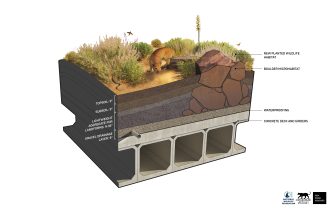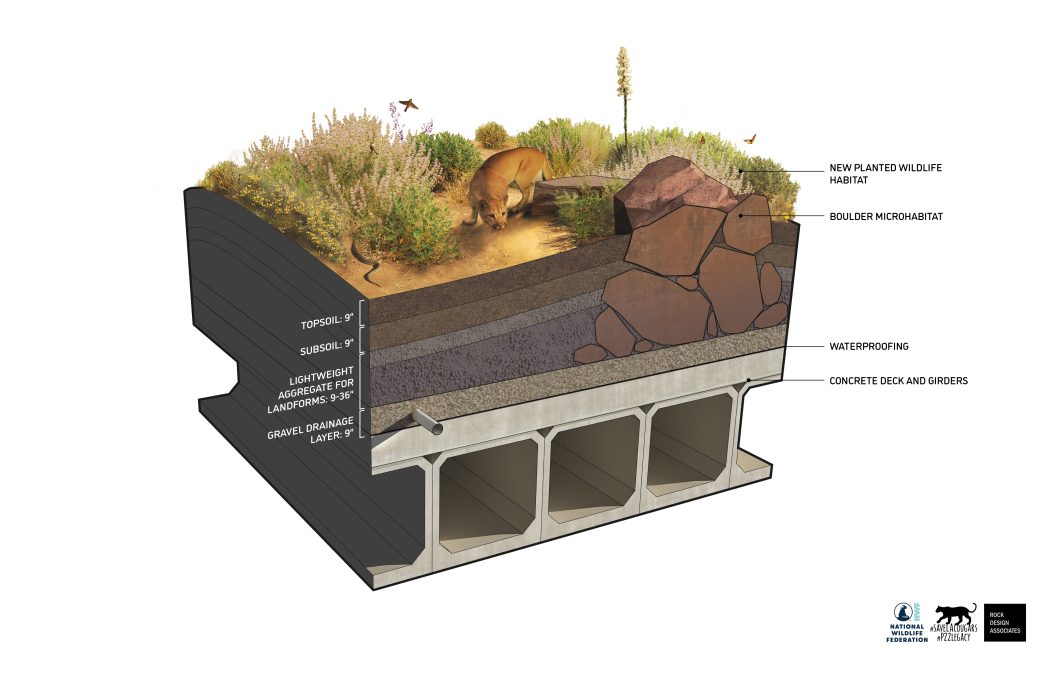Construction crews began adding the first layers of soil Monday to the Wallis Annenberg Wildlife Crossing that will provide nearly an acre of habitat over the Ventura (101) Freeway in Agoura Hills.
From 7 to 10 a.m. crews were scheduled to place the soil on the wildlife crossing that will eventually span 10 lanes across the freeway. The crossing will require about 6,000 cubic yards of soil and take several weeks to finish, according to the Annenberg Foundation.
Construction of the crossing started on Earth Day 2022 with completion expected next year.
An announcement from the foundation described Monday’s soil layering as a milestone culminating years of dedicated work.
The effort first required collaboration among soil scientists, biologists, engineers and mycologists who identified, harvested and cultivated native soil biology and beneficial fungi from the site near the 101’s Liberty Canyon Road exit, according to the foundation. Fully covering the surface of the crossing will require about 6,000 cubic yards of soil and will take several weeks to complete.
After the soil placement, crews will plant approximately 5,000 native plants that will grow into a habitat supporting mountain lions, deer, bats, desert cottontails, bobcats, native bird species and monarch butterflies, among others. Planting is expected to start in May, weather permitting, foundation officials said.
“I imagine a future for all the wildlife in our area where it’s possible to survive and thrive and the placement of this first soil on the bridge means another step closer to reality,” foundation Chairman, President and CEO Wallis Annenberg said in a statement. “This extraordinary structure will serve not only animals, but it will reconnect an entire ecosystem and protect this global biodiversity hotspot — this moment marks another wonderful milestone toward that goal.”
The planting of coastal sage scrub plant species native to the Santa Monica Mountains is part of a broader ecological restoration effort to revitalize an additional 12 acres of open space that calls for 50,000 native plants, trees, shrubs and perennials, according to the National Wildlife Federation.
Over the last three years, the wildlife crossing’s dedicated native-plant nursery has selected more than 1.1 million local native seeds that represent more than 50 distinct plant species native to the Santa Monica Mountains.
Nursery staff are also growing plants and tree species such as coast live and valley oak trees, toyon, ceanothus, several types of sage, California buckwheat, the flowering penstemon and others.
Native vegetation reduces fire risk and better supports wildlife, according to the NWF. A full irrigation and sprinkler system is planned as part of the crossing.
The landscape architecture firm Rock Design Associates oversees the plant nursery with assistance from experts from the Santa Monica Mountains Fund, the National Park Service, Caltrans and the Mountains Recreation and Conservation Authority.











